In the heart of the Venetian plain, the Euganean Hills are an almost unexpected surprise for the traveler who has arrived in these parts to stop in the many cities of art: from Padua to Verona to, of course, Venice. The Euganean Hills with their Regional Park are an oasis of peace and tranquility where one can relax walking along the vast network of trails, but also where one can appreciate the pleasure of good food by going to discover the many traditional products. However, the Euganean Hills also preserve traces of an important past guarded within castles and noble villas, but also the many villages in which you will come across as you go in search of postcard landscapes. Here are ten places not to miss on your trip to the Euganean Hills.
It is surely the most famous and celebrated monument in the walled city of Monselice. The Cini Castle is a complex of four buildings built between the 11th and 16th centuries and is now used as a museum and exhibition center housing important artifacts that tell the history of these places. First and foremost, of great interest is the Lombard Antiquarium housed inside the Library building, which showcases evidence of a 7th-century necropolis, but also the council chamber with its frescoes, the Petrarch studiolo, reconstructed with 14th-century furnishings, and the armory with one of the most important collections of arms and armor in Italy.

On the slopes of the Rocca hill, along the road that goes up to the sanctuary of the Seven Churches is the Old Cathedral. This church dedicated to Santa Giustina dates back to 1256 in the Romanesque style and is one of the best known and most appreciated monuments in the entire area. From its churchyard there is one of the most impressive views not only of Monselice, but of all the Euganean Hills. Inside, on the other hand, valuable 15th-century and later works are preserved. However, since 1957 in Monselice there has also been the so-called Duomo Nuovo dedicated to St. Joseph the Worker. Numerous works of art from the city churches that have been closed or suppressed over the years are preserved here.
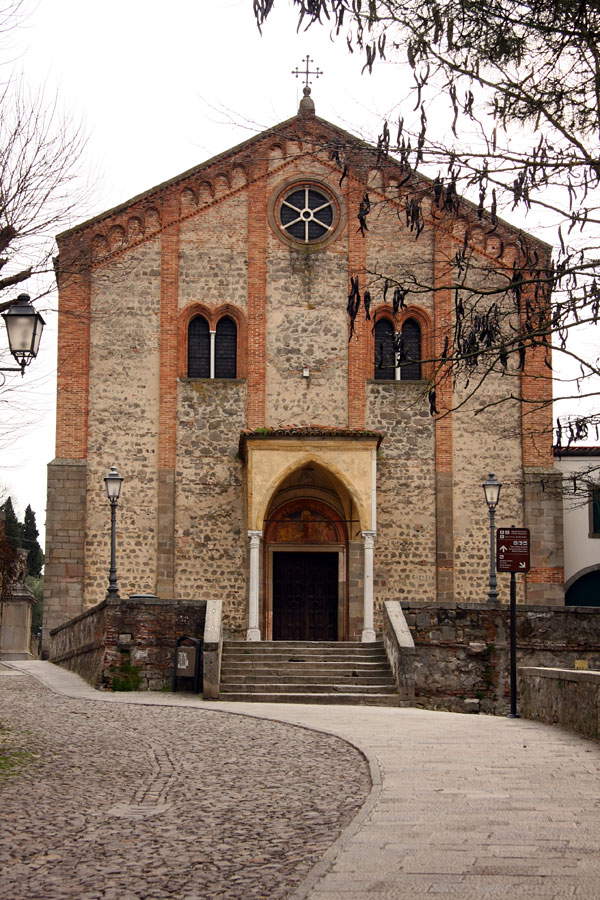
This short scenic road is a must for your trip to discover the Euganean Hills. Starting from the center of the ancient walled city of Monselice, this evocative and characteristic route begins, touching one after the other seven small churches: Santa Maria Maggiore, San Giovanni in Laterano, San Pietro and San Paolo, Santa Croce in Gerusalemme, San Lorenzo and San Sebastiano are the first stops of this itinerary, which then ends at the Sanctuary of San Giorgio known as the Sanctuary of the Saints. In the large square in front of the shrine is also the beautiful Villa Duodo famous for its spectacular views starting with the stone fountain in the center of the square and the large staircase surrounded by the statues of the Four Seasons.
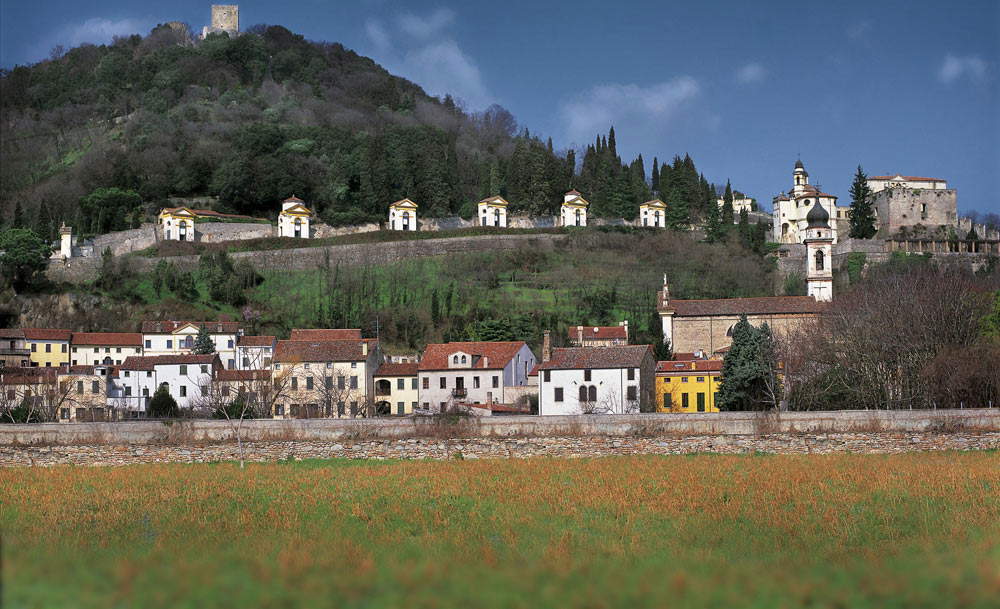
This medieval village in the heart of the Euganean Hills is considered one of the jewels of this corner of Veneto. Here time seems to have stopped at a remote era that can be easily imagined just by walking through the perfectly preserved ancient streets. However, the town of Arquà is indelibly linked to one of the most important figures in Italian literature, Francesco Petrarch. The author of Il Canzoniere retired here in the last years of his life and died here in 1374. Today in Arquà it is possible to visit the poet’s house and retrace his footsteps among the most evocative corners of the town, but from here it is also possible to set out to discover the Euganean Hills by taking advantage of the dense network of paths, to be traveled on foot or by bicycle, from which one can enjoy extraordinary views.
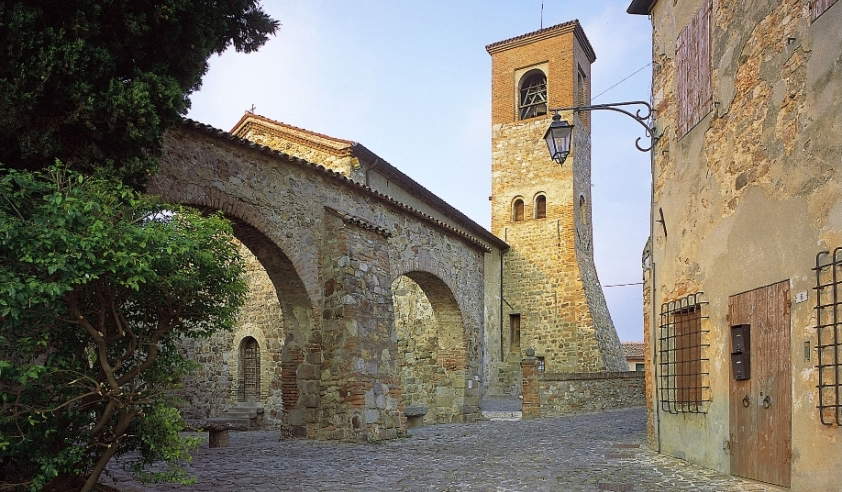
This is certainly one of the best known and most popular places in the entire Euganean Hills. Abano Terme has been known since the 6th century B.C. for the qualities of its waters and is today, together with nearby Montegrotto, Galzignano, Battaglia and Teolo or the largest spa pole in Europe with, among other things, more than 240 pools, indoor and outdoor. This whole area with its numerous hotels, wellness centers and spas is the ideal place to relax and take a few days for yourself, but it also holds many small and large artistic and cultural treasures that tell the long history of these lands.
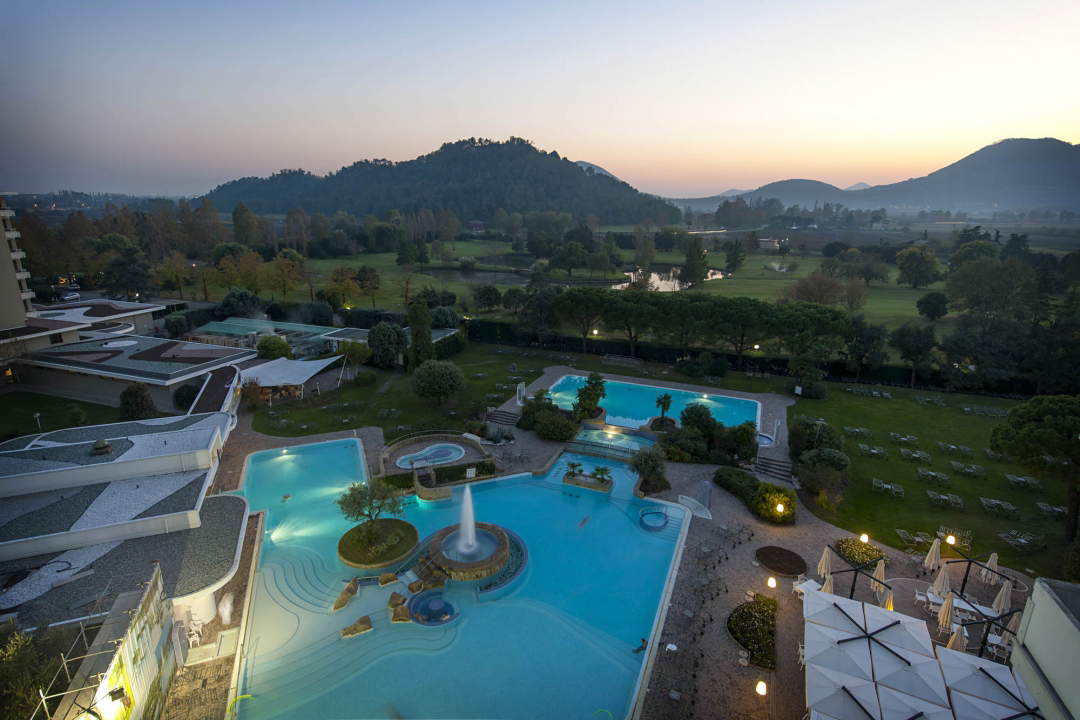
In Montegrotto there is a very special museum, capable of telling the story of an entire territory simply by going to investigate and explain what is its most famous and most precious symbol: thermal water. The Museum of Thermalism in Montegrotto offers a long journey to discover the origins and the long path taken by thermal water, from its birth underground to its release in the form of steam, mineral water and mud. Not only that, the exhibition and educational tour focuses especially on the reality of the Euganean Hills starting from their formation through the discovery of the properties of their waters and to their development over the millennia.
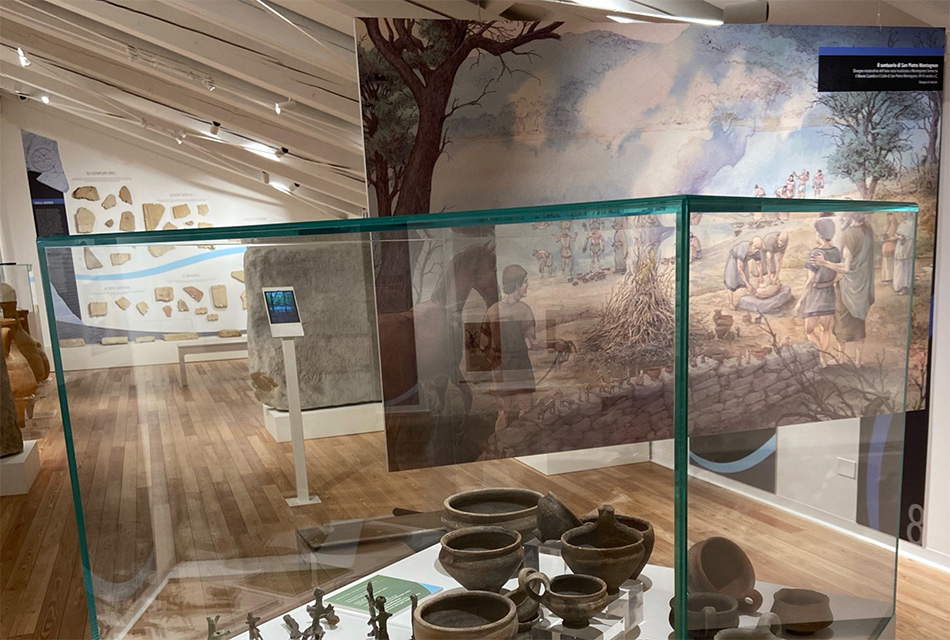
It is one of the most imposing historic residences in all of Europe and one of the most iconic places in all of the Euganean Hills. This monumental 16th-century palace is located in Battaglia Terme and was built by the Obizzi family. During its long history Catajo Castle has been military lodging, a princely villa and even an imperial palace since it became the holiday residence of the Habsburgs, emperors of Austria. Surrounded by a wonderful park of 40 hectares, Catajo Castle allows visitors to fully immerse themselves in a world rich in history, art and colors among sculptures, frescoes and splendid paintings. All this while always enjoying the wonderful views of the Euganean Hills in the background.
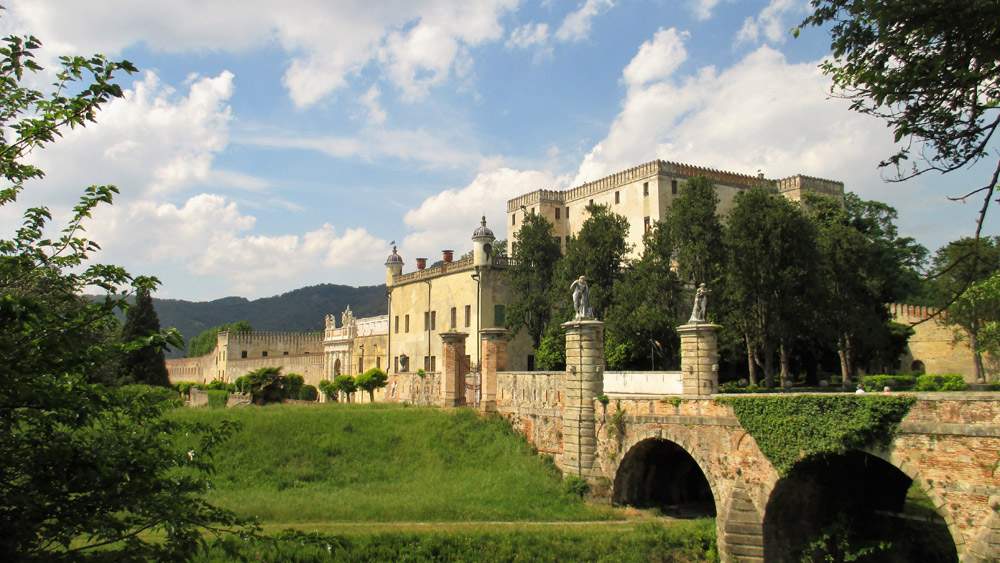
It is the smallest municipality of all the Euganean Hills and the ideal gateway to them. What characterizes Battaglia Terme more than the green of the lush vegetation in which this village is immersed is the dark blue of its water, both the thermal water that gushes from the only natural cave of its kind in the entire Euganean area, and that of its canals: the Battaglia, the Bisatto and the Vingenzone. River navigation has always been at the center of Battaglia Terme’s history and, not surprisingly, it is precisely to the trades and customs that developed around canal life that the Museum of River Navigation is dedicated. Battaglia Terme is also the starting point of the ’Horseshoe’ trail, a path of great naturalistic value that winds between the plains and the hills of Mount Ceva.
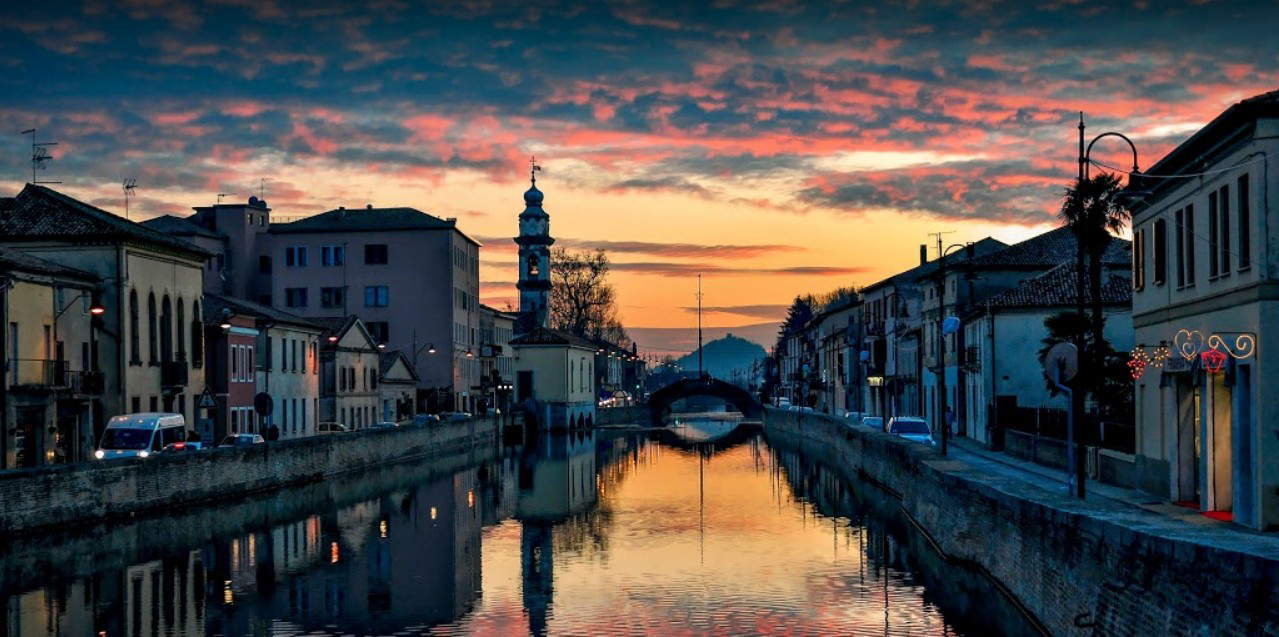
Art and nature unite and sublimate among the paths of the splandid Villa Barabarigo. Here is a botanical garden more than three centuries old, created in the late 17th century by one of the richest and most important Venetian families, the Barbarigo family, as a solemn vow to God to defeat the plague. The garden was thus conceived as an allegorical pathway intended to convey a positive message to visitors, while inviting them to meditation in the face of what is a spectacular marriage of the wonders of nature and the genius of man. There are so many wonders to be admired in the park of Villa Barbarigo including a boxwood labyrinth about 400 years old, probably the oldest of its kind in the world, and still many trees from 300 to 900 years old from Asia, America, Africa and Europe.

It is considered one of the most beautiful and elegant Renaissance villas in the entire Padua area. Villa dei Vescovi dominates the Euganean Hills from a high hillock surrounded by the Pendice, Pirio and Rina mountains. The beauty of this place is said to have conquered even Titus Livy, who established his country residence here. Beginning in the 15th century then the bishops of Padua decided to make it a resort and meeting place for intellectuals and men of letters, and beginning in the late 1500s work began on the construction of the present villa, which preserves important frescoes. The interior, on the other hand, is furnished with period furniture and accompanied by an educational tour illustrating the history and stages of the villa’s recovery. Very suggestive, finally, are the large gardens that surround the villa, embellished by the loggias with the large portico.
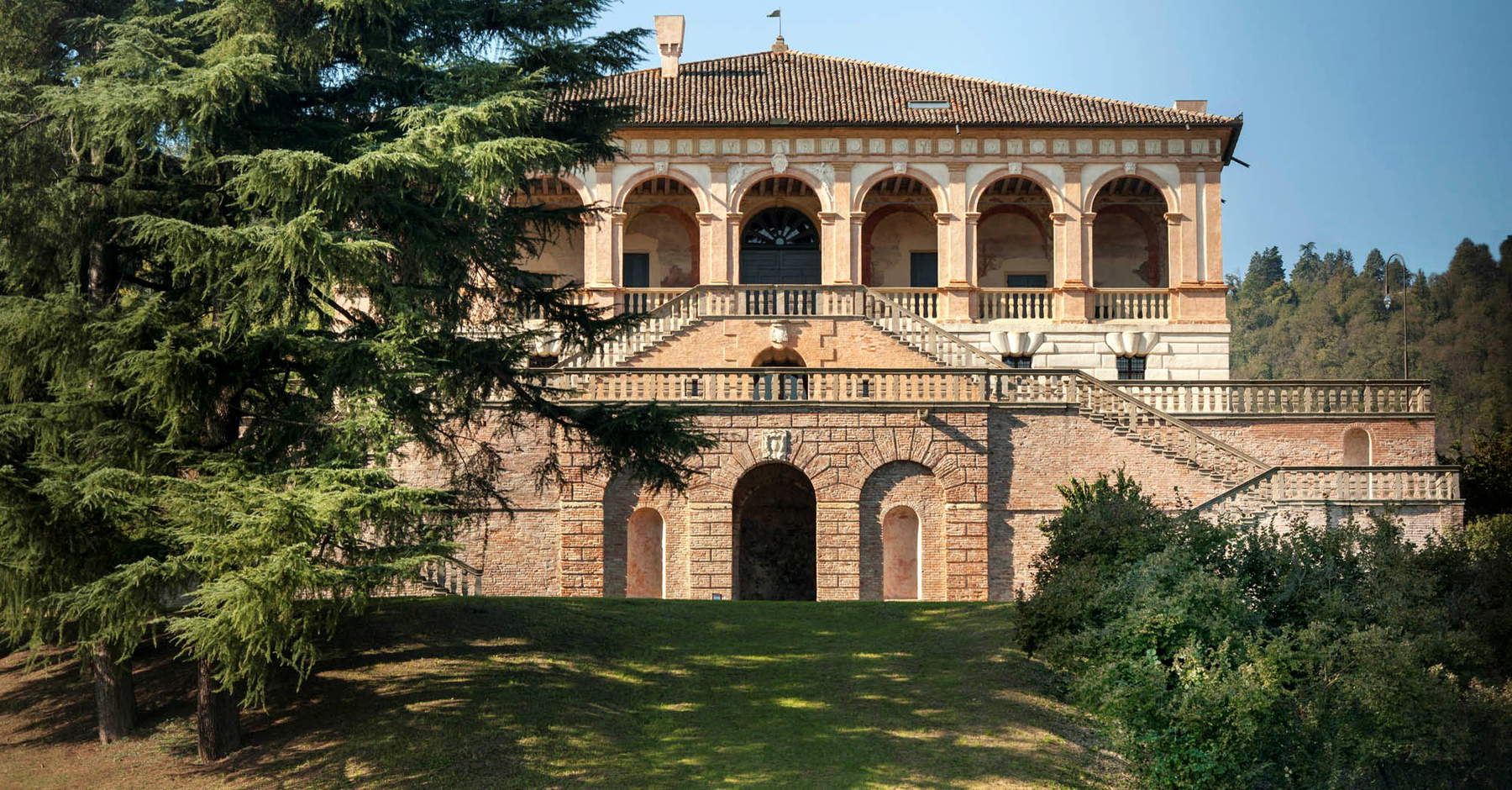
 |
| Euganean Hills, what to see: 10 places to visit |
Warning: the translation into English of the original Italian article was created using automatic tools. We undertake to review all articles, but we do not guarantee the total absence of inaccuracies in the translation due to the program. You can find the original by clicking on the ITA button. If you find any mistake,please contact us.